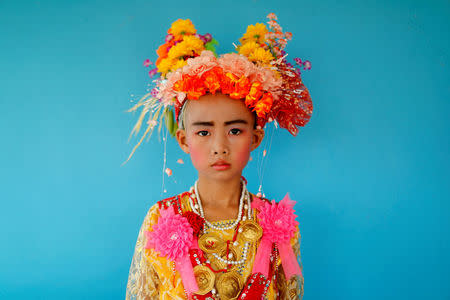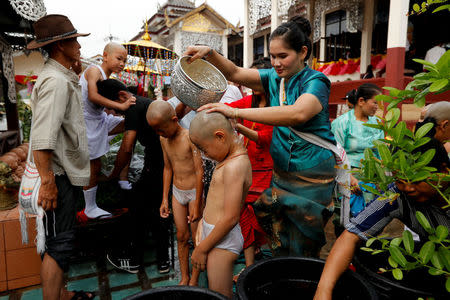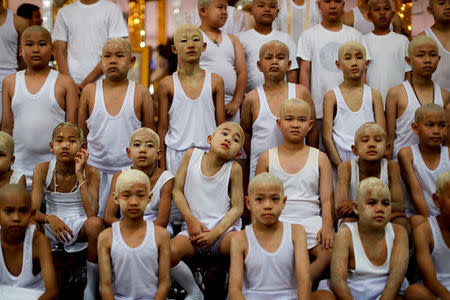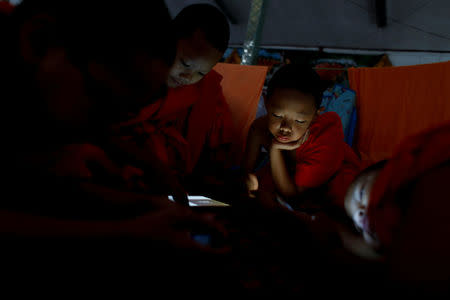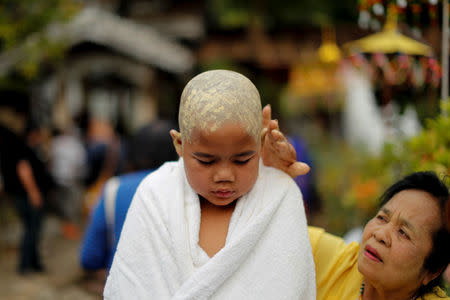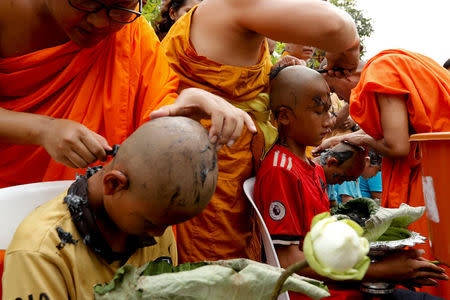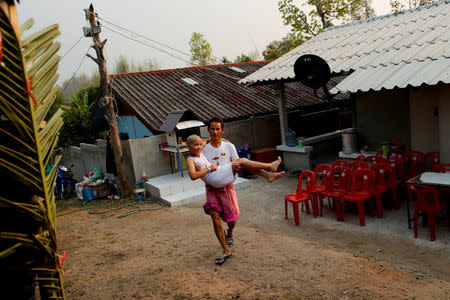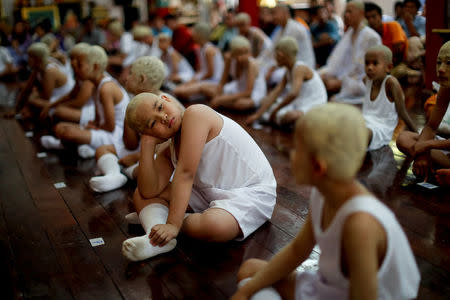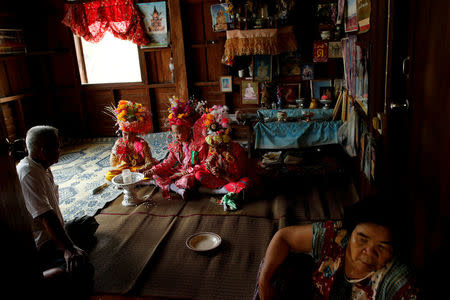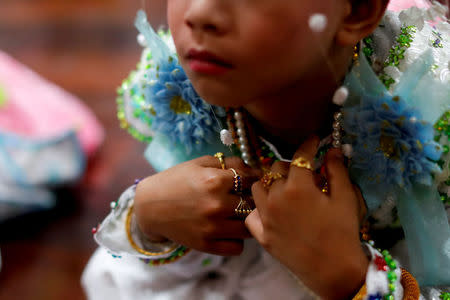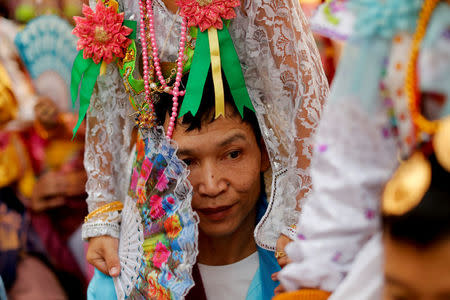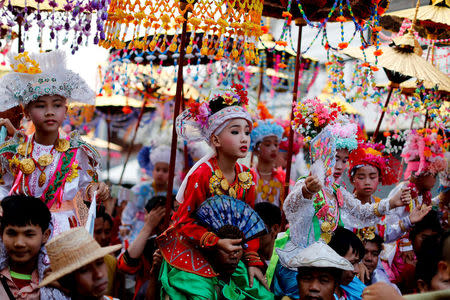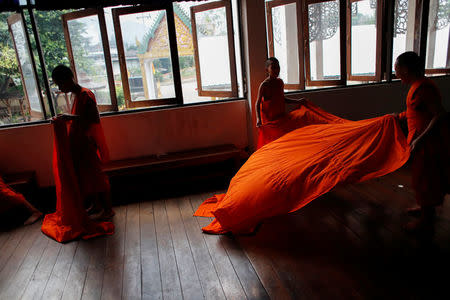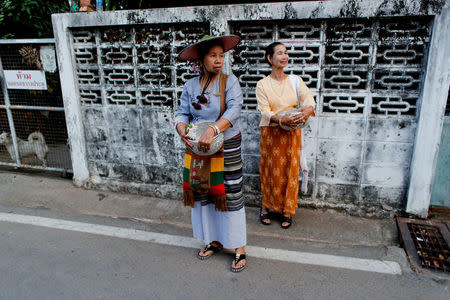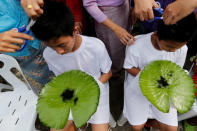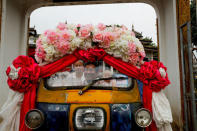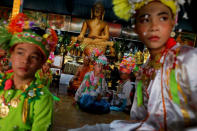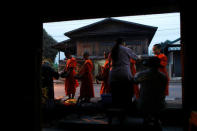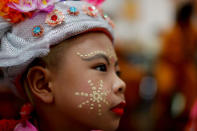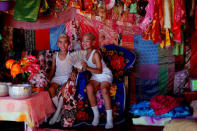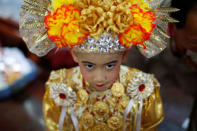Beloved princes: Boys become Buddhist novices in Thailand
By Jorge Silva
MAE HONG SON, Thailand (Reuters) - Golden umbrellas draped in beads and flowers provide shade for boys as young as seven riding on their fathers' shoulders in a procession through the mountain town of Mae Hong Son on Thailand's northern border.
Dressed in clothes dominated by neon pinks and greens with elaborate headgear, their lips and cheeks brightly rouged for the most important day of their short lives, about 50 boys advance to the lively beat of drums, cymbals and gongs.
The event is a rite of passage to initiate the boys as Buddhist novices, the highlight of an annual celebration by the Shan ethnic group that lives mainly in neighbouring Myanmar, but is also spread through China, Laos and Thailand. (Click https://reut.rs/2FgiZ1Q to see a picture package of this Buddhist celebration.)
"I was overwhelmed with happiness and excited about the ceremony," said Kasen Kongtui, 58, a Thai trader who sponsored the participation of a 12-year-old family friend, Poo Sit, from Myanmar.
"He told me: 'Grandfather, I want to become a novice!' So we helped him," Kasen told Reuters. "I did it to make merit."
To fulfil the dream of a son's participation in the prestigious event, parents willingly scrimp for a long time, others accept relatives' donations to defray costs, and the poorest may even send offspring to live with wealthier families.
The rite of Poy Sang Long, as the celebration is known, represents the early childhood of the founder of Buddhism, Siddharta Gautama, who was born a prince about 2,600 years ago.
He is said to have given up a life of royal splendour to live as a holy man after witnessing sickness and death outside the palace.
The boys' ordination is thought to bring honour to their families, and the event runs for a week during the dry season before the traditional Thai New Year, when most villagers are home for the holiday and children are on a school break.
For these 'beloved princes' of the Shan families, the ceremony runs through several stages, from the shaving of their heads, with the shorn locks wrapped in lotus leaves by their mothers to be saved as a keepsake, to a bath in scented water.
They dress in white and have dazzling patterns drawn on their faces and heads with a yellow cosmetic paste made from ground-up thanaka bark thought to have protective properties.
From now until the end of the festival, the boys are believed to have acquired semi-divine status, and are not allowed to touch the ground or walk by themselves.
The parade takes place the next day, preceding a more contemplative period on the third day, when the boys visit relatives' homes to pray for their families.
After the week is up, the boy novices live at a temple for one or two months during school holidays, studying Buddhist scripture.
"I like having my head shaved," said August, a smiling 8-year-old clad in red and gold, with an ornate hat that featured pink flowers and diamante trim, as he described his favourite part of the rite.
"When I saw my friends doing this, I decided to become a novice. I want to be the Buddha's representative. I want to be a good person."
(Editing by Amy Sawitta Lefevre, Karishma Singh and Clarence Fernandez)

